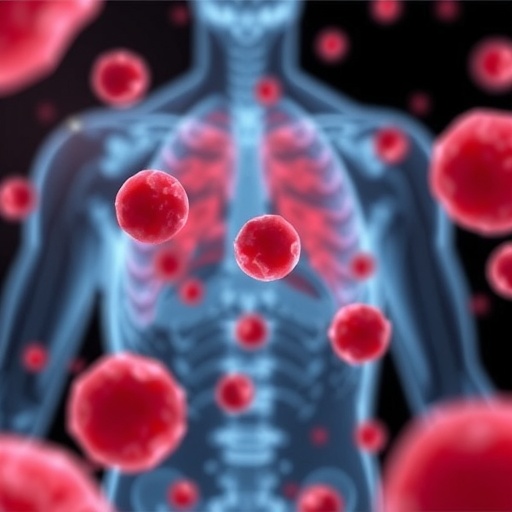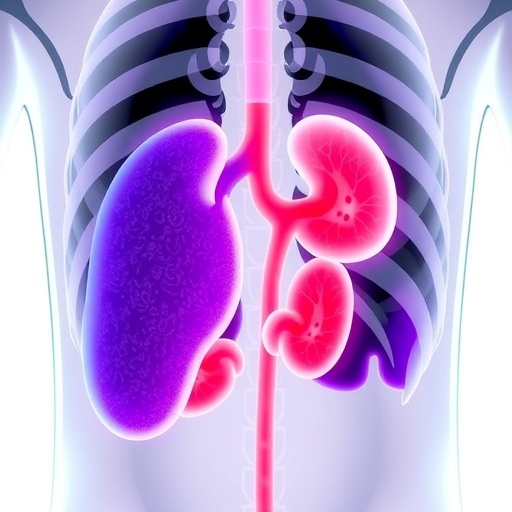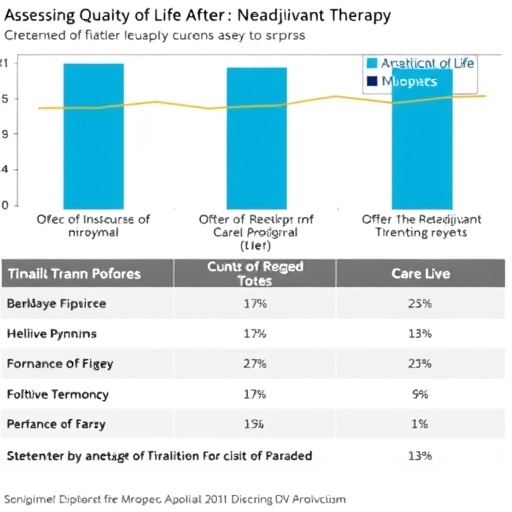In a groundbreaking study published in BMC Cancer, researchers have unveiled compelling evidence that specific red blood cell indices (RCIs) may serve as significant predictors of cancer risk. Leveraging data from an expansive prospective cohort involving nearly half a million participants, the study provides new insights into how the intrinsic properties of red blood cells—long known for their role in oxygen transport—might also signal underlying cancer susceptibility. This discovery opens promising avenues for early detection and risk stratification, potentially revolutionizing cancer prevention and diagnostic strategies.
Red blood cells (RBCs) are the most abundant cells in human circulation, performing the vital function of transporting oxygen throughout the body. However, their health and morphological characteristics, summarized through various indices, have typically been studied in the context of hematologic diseases rather than oncology. The current research breaks this mold by examining the association between five key red blood cell indices — mean corpuscular volume (MCV), mean corpuscular hemoglobin (MCH), mean corpuscular hemoglobin concentration (MCHC), red cell distribution width (RDW), and hemoglobin concentration (Hb) — and subsequent cancer development.
The study cohort comprised an unprecedented 455,897 individuals, all of whom were cancer-free at the baseline assessment, with blood samples analyzed to ascertain their RCI profiles. Over a median follow-up period of almost 11 years, researchers meticulously tracked the incidence of new cancer diagnoses, leveraging robust multivariate Cox proportional hazards models to tease out complex relationships. These models were rigorously adjusted to account for confounding factors and allowed the researchers to isolate the independent contribution of each red cell index to cancer risk.
.adsslot_NQVGkapXvI{width:728px !important;height:90px !important;}
@media(max-width:1199px){ .adsslot_NQVGkapXvI{width:468px !important;height:60px !important;}
}
@media(max-width:767px){ .adsslot_NQVGkapXvI{width:320px !important;height:50px !important;}
}
ADVERTISEMENT
Perhaps most strikingly, the team discovered that higher mean corpuscular volume (MCV) and mean corpuscular hemoglobin (MCH) levels were inversely correlated with the overall risk of developing cancer. Individuals in the highest quintile of MCV and MCH measurements had a roughly 17% reduced risk compared to those in the lowest quintile. This inverse association persisted even after controlling for multiple potential confounders and displayed a non-linear dose-response curve, underscoring the complexity of these biomarkers in cancer biology.
Conversely, red cell distribution width (RDW) emerged as a potent positive predictor of cancer risk. RDW, a measure reflecting the variability in red blood cell size, showed a clear linear relationship with cancer incidence; higher RDW values conferred increased risk. This suggests that subtle disruptions in red blood cell homeostasis and heterogeneity may be early harbingers of oncogenic processes or underlying systemic inflammation known to facilitate tumorigenesis.
The implications of these findings become even more profound when examining site-specific cancers. Elevated MCV and MCH were correlated with decreased risks of lymphoma, leukemia, breast, and kidney cancers, which represent a diverse array of malignancies affecting both hematologic and solid tissues. In contrast, RDW showed consistent positive associations across these cancer types, further highlighting its utility as a universal biomarker for tumor risk.
From a mechanistic standpoint, these associations prompt intriguing questions. It is well-documented that red blood cells can influence the tumor microenvironment, for example, through the modulation of oxidative stress or immune responses. Alterations in red blood cell size and hemoglobin content could reflect shifts in erythropoiesis induced by systemic inflammation or marrow dysregulation, both of which are common in pre-neoplastic states. This study lays the groundwork for future investigations aimed at uncovering the biological pathways linking red cell indices to oncogenic transformation and progression.
The researchers harnessed sophisticated statistical techniques, including restricted cubic spline models, to capture the nuanced, non-linear dynamics between red cell indices and cancer risk. This analytic approach provides a more refined understanding over conventional linear models, revealing threshold effects and potential saturation points where risk associations change in magnitude or direction.
Importantly, this study represents one of the largest and most comprehensive cohorts to evaluate blood indices as cancer predictors, lending substantial weight to the validity of the findings. The longitudinal design, robust sample size, and rigorous adjustment for confounders—including lifestyle factors, comorbidities, and demographic variables—underscore the robustness of these associations.
Given these compelling results, red blood cell indices, which can be inexpensively and routinely measured during standard blood tests, hold immense potential as accessible biomarkers in clinical practice. Their integration into existing cancer risk assessment frameworks could enhance early identification of high-risk individuals, enabling timely interventions and personalized surveillance strategies.
However, the authors caution that while the associations are robust, causality cannot yet be established. The underlying biological mechanisms require elucidation through experimental studies and validation in diverse populations. Moreover, it remains to be seen whether modifications in red blood cell indices through therapeutic means could influence cancer risk outcomes.
This study also prompts a reevaluation of common clinical parameters. RDW, traditionally viewed as a marker for anemia and cardiovascular risk, now emerges as a candidate biomarker with broader implications in oncology. Likewise, MCV and MCH, routinely used to diagnose nutritional deficiencies and hematologic disorders, might possess untapped prognostic utility beyond their classical applications.
The findings underscore the intricate interplay between hematologic health and malignancy, reminding us that cancer risk is multifactorial and systemic. They highlight the importance of integrative approaches that consider not only genetic and environmental factors but also subtle hematological indices that may reflect systemic physiological disruptions.
As the global burden of cancer continues to rise, especially in aging populations, simple, cost-effective, and non-invasive predictive tools are urgently needed. Red blood cell indices, as revealed in this landmark study, may soon become integral parts of such tools, complementing genetic and imaging markers to refine cancer risk stratification.
Future research is anticipated to delve deeper into whether red blood cell indices could predict not just incident cancer but also prognosis, treatment response, and survival, potentially guiding therapeutic decision-making. Additionally, mechanistic studies exploring how erythrocyte biology interacts with tumorigenesis at the molecular and cellular levels will be critical to translating these epidemiological findings into clinical interventions.
In conclusion, this pioneering work elevates red cell indices from mere laboratory values to potential sentinels of cancer risk, redefining our understanding of the link between hematology and oncology. As research unfolds, these findings may herald a new era of precision medicine centered around hematologic biomarkers, paving the way for earlier detection and improved patient outcomes in the fight against cancer.
Subject of Research: The investigation focused on the relationship between red blood cell indices and the risk of developing cancer, examining both overall and site-specific malignancies in a large prospective cohort.
Article Title: Red cell indices as predictors of cancer risk: findings from a large prospective cohort study
Article References:
Fu, C., Cheng, X., Shen, Y. et al. Red cell indices as predictors of cancer risk: findings from a large prospective cohort study. BMC Cancer 25, 1342 (2025). https://doi.org/10.1186/s12885-025-14679-8
Image Credits: Scienmag.com
DOI: https://doi.org/10.1186/s12885-025-14679-8
Tags: BMC Cancer study findingscancer prevention through blood analysisearly detection of cancer through RBCshematologic indices in oncologyhematology and oncology researchintrinsic properties of red blood cellsmean corpuscular volume and cancer susceptibilitynovel cancer diagnostic strategiespredictive biomarkers for cancer detectionprospective cohort study on cancerred blood cell indices and cancer riskred cell distribution width and cancer prognosis





